Let There Be Light
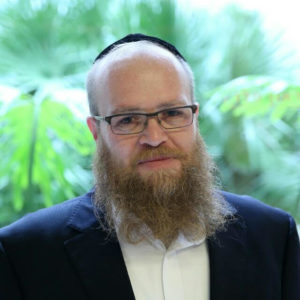

Rav Reuven Elbaz sounds the call of teshuvah. A conversation of love and light
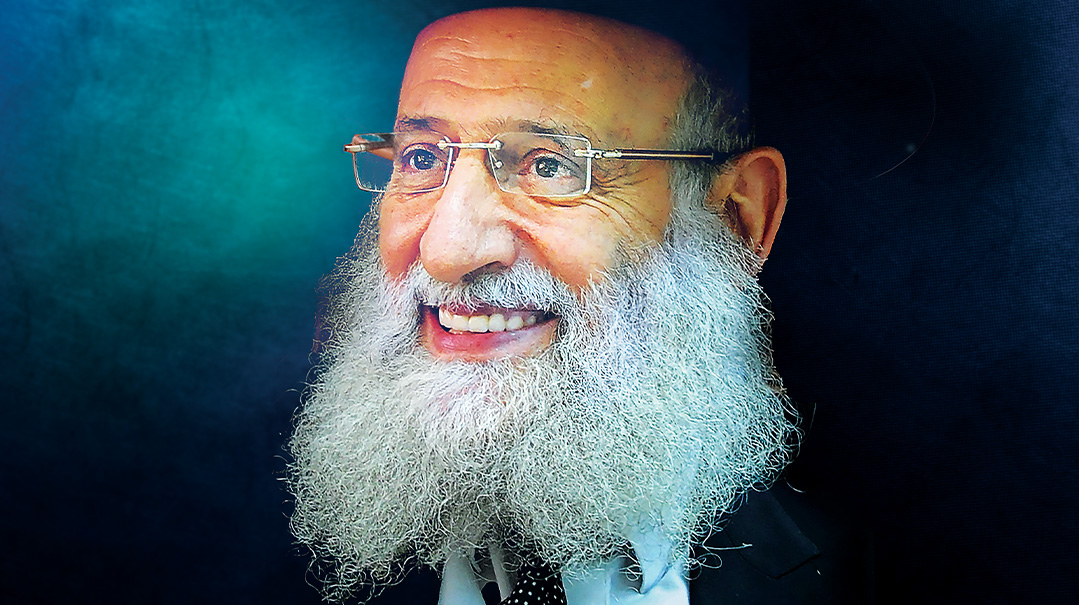
Photos: Elchanan Kotler, Flash90, Mattis Goldberg, Mishpacha archives
Before there was a teshuvah movement or a Shas party, Rav Reuven Elbaz was a pioneer of the revolution, proven by the thousands of graduates – some second and third generation – of his Ohr Hachaim institutions. But the beis medrash is never as bright as at midnight during Elul, when a thirsting nation of all colors and stripes comes together to bask in the glow of forgiveness
Midnight was well past, a hush had descended over much of Yerushalayim, but in the fortress-like building on Rechov Yoel, it was high noon.
Thousands streamed into the floodlit, concrete expanse of Yeshivat Ohr Hachaim where a meeting of worlds was underway.
As if the traders of the Mahaneh Yehudah shuk had decamped en masse, hundreds of jeans-clad men with white kippot perched on shaven heads stood alongside yeshivah bochurim and businessmen from Panama and Paris.
Even the head of IDF military intelligence was said to be there, soaking up the elevation of Selichot at one of Israel’s most famous destinations.
“Ben Adam mah lecha nirdam…” Like a full-throated rendition of the national anthem, the opening piyut boomed off the vast crowd, rolling along the packed corridors, down the stairs and out into the Yerushalmi night air.
For almost an hour, the cavernous hall was filled with a heady mixture of fervor and melody — Hashem, Hashem alternating with favorites like Adon Haselichot.
Suddenly, the crowd took their places and a hush descended as a patriarchal figure took the microphone.
Rav Reuven Elbaz, rosh yeshivah of Ohr Hachaim institutions and a pioneer of Israel’s teshuvah movement, gazed out over the packed hall, smiling in recognition to people in the crowd who caught his eye.
Then came the unexpected.
As if he hadn’t read the audience, or got the memo that outreach is about inspiration and avoiding uncomfortable topics, Rav Elbaz began to speak — about modesty.
“Jewish women, Jewish daughters,” he cried emotionally to his all-male audience. “Throughout history, we’ve always kept tzniyut.
“In the Middle Ages there was a girl who was sentenced to death by being dragged by horses, and she amazed her captors by asking for pins to attach the clothes to her body so that she shouldn’t be disgraced.
“But look at our generation,” continued the Rosh Yeshivah, eyes shut as if in pain, “how low we’ve fallen!”
For anyone looking to understand why thousands of Israelis have given up secular life over the past 50 years after hearing Rav Reuven Elbaz, the answer lies in the deep and genuine pain that pours from his heart at the thought of Jews distanced from the Torah.
Moroccan born, talmid of Israel’s nascent yeshivah world, Reuven Elbaz’s life changed when as a teenager he met Rav Ovadiah Yosef — himself then just beginning his ascent to fame. Recognizing a rising star, just a few years later Rav Ovadiah directed a young Rav Elbaz into giving shiurim.
Those Friday night appearances eventually grew into a national movement with hundreds of branches, including schools and yeshivos around which have sprung up Torah communities in the unlikeliest of places, such as Eilat.
In the Israeli kiruv scene, and especially during Selichot, all roads lead to Ohr Hachaim, which is a combination of yeshivah and revolutionary headquarters.
Fifty years on from teaching his first handful of talmidim, he still heads out to weekly rallies in secular cities across the country in order to reach the Jew inside of the Israeli.
On the cusp of his ninth decade, Rav Elbaz is still on fire — “hislayvus,” — as he pronounces it in a mixed litvish-Moroccan accent.
Working with the third generation of baalei teshuvah, he remains convinced that the surest way to ignite growth lies in exposure to the same authentic Torah brilliance that he saw with the post-war roshei yeshivah and Rav Ovadiah.
“People can be inspired by a Selichot or a Shabbat,” he says, “but when do I know that we have them, that they’ll truly change? When they get drawn into the world of Gemara.”
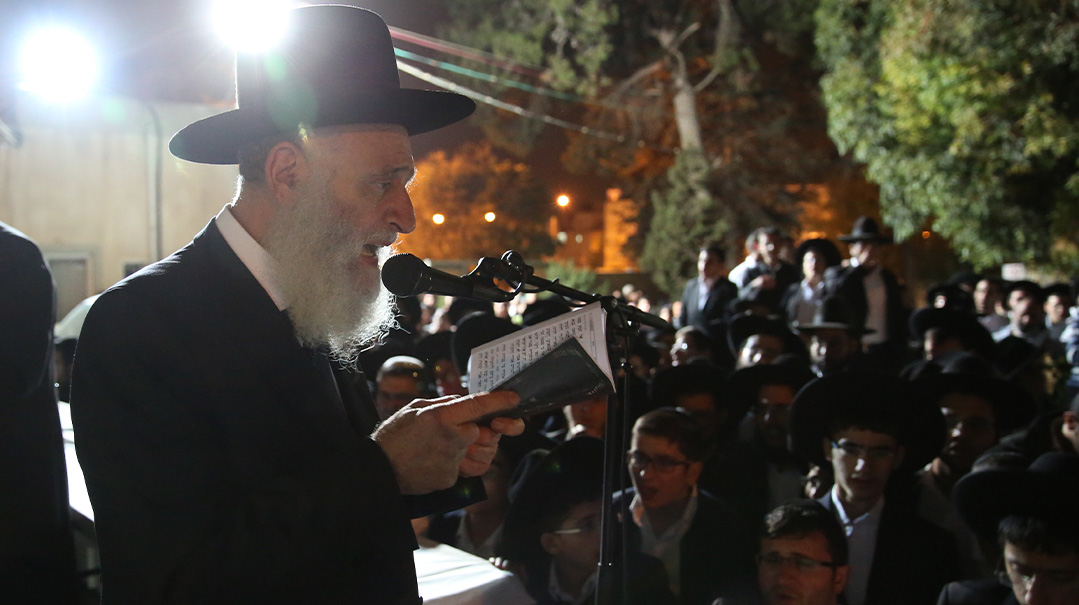
We’ll Make the Revolution
As a pioneer of the teshuvah movement, it’s perhaps fitting that Rav Reuven Elbaz’s story began on Rosh Hashanah.
Born in 1944 to traditional parents in Boujad, a small town in central Morocco with a large Jewish population, Reuven was 12 when he came to Israel with the Youth Aliyah.
His parents followed later, but meanwhile he was placed in a school run by the Poalei Agudas Yisrael party, where the new immigrant celebrated his bar mitzvah with his classmates.
A speech he gave at that event would be a prophetic path for the future.
“I’ll never forget that speech,” recalls Rav Elbaz. “I stood up and said that Am Yisrael needs to do teshuvah, and that we would be the leaders and would make a revolution to spread the light of Hashem in the world.”
With that unusual drive, it was almost inevitable that the boy from Morocco would find himself in the heart of Israel’s then-small yeshivah world.
“In terms of Sephardi yeshivot there was Porat Yosef and one or two others in those days,” he says. “But in my generation, Hashem arranged a meeting between the Torah world of Lithuania and the Sephardi world. That’s how Chacham Shalom Cohen ztz”l of Porat Yosef, for example, became devoted to the writings of the Avnei Nezer, the first rebbe of Sochatchov.”
Young Reuven’s first exposure to the analytical learning of the yeshivah world was Tiferes Yisrael in Haifa, founded in 1925 by Rav Dov Meir Rubman, a graduate of Kelm and former rabbi of Vilkomir in Lithuania. The yeshivah was a pioneering institution that was the first to head out of the traditional religious population areas.
The 15-year-old bochur also became close to Rav Rubman’s son-in-law, Rav Refael Shapira, who was a scion of the Volozhin dynasty and cousin of the Brisker Rav. That relationship led ultimately to Rav Ovadiah’s door.
“When I was 15 years old,” Rav Elbaz explains, “I told Rav Refael that I didn’t want to go home for Rosh Hashanah, that instead, I wanted to experience a real yeshivah davening.” That wasn’t an option in Tiferes Yisrael where all the boys went home for the Yamim Noraim. So, Rav Refael introduced him to his brother Rav Elya Chaim Shapira, who arranged for a place next to him in Yeshivas Chevron.
The tefillah in Chevron — then in the Geula neighborhood — was famously led by Rav Shalom Schwadron, whose unique tunes and nusach spread far beyond Israel’s shores, across yeshivos and communities worldwide.
For the impressionable young bochur, that Rosh Hashanah proved a unique experience.
“Ay! What a special thing it was to be there in the intense yeshivah atmosphere,” Rav Elbaz exclaims from a distance of six decades. But it was after the davening was over that the turning point came.
“Rosh Hashanah was Thursday and Friday that year, and one of the Sephardi bochurim in Chevron turned to me and said, ‘You want to hear something really special? Tomorrow there’s a Shabbat Shuvah derashah down the road that’s worth going to.’
“I went along, and saw a young rav who was speaking without any notes or a single sefer in front of him, yet pouring forth with dozens, maybe hundreds of sources from Gemara, Rishonim and Acharonim. It was Rav Ovadiah Yosef, and I said to myself, ‘Halevai that one day I’ll be able to speak like this.’ At the time I had no idea that he would indeed become my rav and mentor.”
A close connection to the Sephardi world’s rising star was a few years away, but in the meantime Reuven Elbaz’s immersion in the Lithuanian Torah world continued apace.
It was after his marriage to the daughter of Reb Shmuel Zakkai — an early talmid of Rav Ovadia and founding member of the Rav’s long-standing popular shiur for balabatim — that his journey in the Sephardi yeshivah world began.
Rav Ovadiah invited the young avreich to learn in his dayanus kollel, a mark of esteem for Rav Elbaz’s brilliance. Rav Benzion Abba Shaul — heir to the classic Sephardic halachic tradition embodied by Yeshivat Porat Yosef — also took Rav Elbaz under his wing, studying with him for hours each day over the course of four years.
Beyond Torah scholarship, Rav Ovadiah — a noted storyteller in his own right — had noticed Rav Elbaz’s golden tongue. When Rav Ovadiah left to become Tel Aviv’s chief rabbi in 1968 followed by the appointment as Israel’s chief rabbi five years later, he handed over his by-then famous shiurim to his protégé.
“The secret was to mix stories and meshalim with halachah and drush,” Rav Elbaz recalls of the formula that he still follows. “You have to be able to understand what your audience wants to hear.” (In the early days of Rav Ovadiah’s famed shiur for simple laymen, in order to ensure that they would come to the shiur each night, he would tell serialized stories so no one would want to miss an installment.)
Rav Elbaz’s rising profile put him on the political radar as well.
“In those days, there was no Shas Party,” says Yariv Avnaim, a talmid who’s accompanied Rav Elbaz for 25 years. “So Agudah asked him to work on getting Sephardi voters for the party.”
The drive for greatness that had manifested itself at his bar mitzvah celebration years before came to fruition when, at the ripe old age of 25, Rav Elbaz was appointed the Sephardi rav of the Beis Yisrael-Bukharim-Shmuel Hanavi area.
In a sense it was also the final link in his hybrid Moroccan-litvish identity. The neighborhood was host to his alma mater, Novardok, just down the road from his future yeshivah, Ohr Hachaim.
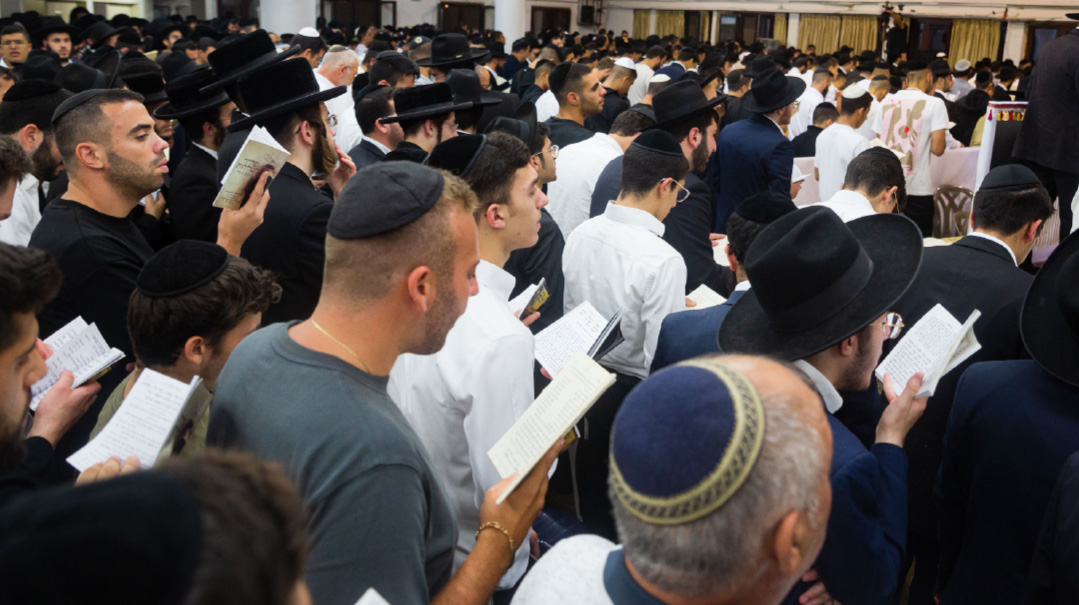
Jeans-clad fellows with white kippot alongside yeshivah bochurim and suited businessmen gear up together for the Day of Judgment. During Selichot, all roads lead to Ohr Hachaim
Rav Elbaz’s secret,” says long-time talmid Rav Menashe Menashe as he leans back with a smile, “is that he loves each Jew. He wants what’s best for them, and when he speaks from the heart, people listen.” He should know. He was one of them.
Sitting on the far-right of the expansive second-floor beis medrash in Yeshivat Ohr Hachaim, Rav Menashe — now in his sixties — gazes out at the latest generation of talmidim from behind a pile of seforim in what’s been his home for decades.
One of five early talmidim who founded the yeshivah, he’s a prime example of the caliber of students that Rav Elbaz sought to recruit.
Blessed with a photographic memory, Rav Menashe’s total recall of Shas and Zohar is legendary.
Rav Menashe’s path to learning shows the faith that Rav Elbaz demonstrated early on in the transformative power of learning.
“Do you know who Rav Menashe was?” says Rav Elbaz. “When he first joined my shiur decades ago, he was a carpenter. He began to learn, and within a short time, he decided to dedicate himself full-time to becoming a talmid chacham. He’s never looked back.
“Thirty-five years ago, Rav Chaim Kreiswirth visited the yeshivah and I asked him to give a Gemara shiur. He said, ‘A high-level shiur to baalei teshuvah? Rav Elbaz, atah tzoichek!’” Rav Elbaz recalls, imitating his guest’s Ashkenazi pronunciation. “But I insisted, and a few minutes in, Rav Menashe put up his hand and said, ‘Tosafot in Eiruvin argues…’ and then quoted the whole Tosafot verbatim. Rav Kreiswirth was amazed, and they went backward and forward, quoting different sources word-for-word.”
Another early member of the group that coalesced around Rav Elbaz was Rav Menashe’s older brother, Rav Reuven, then a technician in the Bezeq phone company and now a talmid chacham whose proficiency in Shas is only rivalled by his diligence.
“I got to know him during bein hazemanim, when I would sit and learn in the Beit Yisrael shtiblach, and he would come to ask, ‘HaRav, what does the Mishnah Berurah mean here?’” recalls Rav Elbaz.
“You have to understand that when the Rav started out, there was no teshuvah movement,” says Yariv Avnaim. “The Rav started to go out into secular cities across Israel and give shiurim. A handful of students became hundreds and thousands.”
Perhaps due to the military background of some of those early participants — many leading talmidim served in elite units — those outreach events were called “peshitot,” military jargon for a sweep.
Arriving in a blue Ford Transit that became famous in its own right, Rav Elbaz would speak to large audiences gathered by his students in the area.
“Until this day, the format is the same,” says Avnaim. “There’s a well-known personality such as a singer who tells his own story of teshuvah. I’ve been the warm-up speaker for the last quarter-century, and then Rav Elbaz speaks. We return home at one a.m., then the Rav has a chavrusa until two-thirty and goes to sleep, but is up again at five a.m.
“In between,” continues Avnaim, “he has a chavrusa at seven, then Shacharis, then learns with one of the dayanim, then gives a high-level Gemara shiur at 12, then is a sandek for up to five brittot a day from one p.m., returning at six p.m. to give a shiur to married students, followed by daf yomi at seven p.m. for working men in the area, followed by a shiur to the yeshivah at eight-thirty p.m.
“I was in the paratroopers’ reconnaissance unit and I had to do a 90-kilometer march, but I can’t keep up with him.”
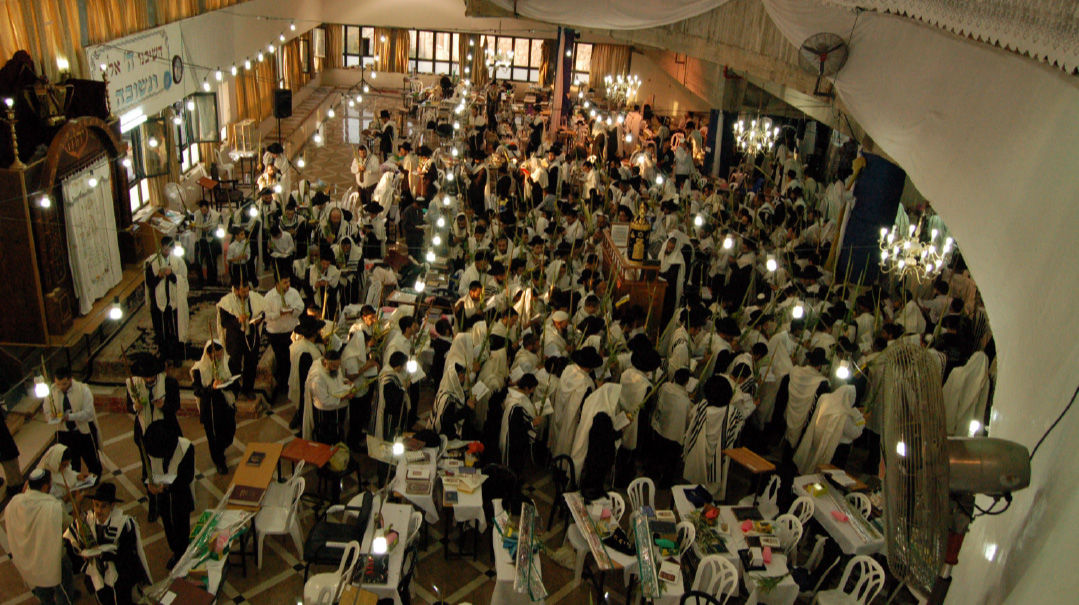
City Sweeps
The results of those early years can be counted in human terms. Israel’s baal teshuvah population is estimated at a quarter million, many thousands of whom began their journeys in Ohr Hachaim.
“We have 20 to 30 boys here from Ashkenazi homes, from kibbutzim, from Tel Aviv,” says Yariv Avnaim, “but the reality is that Sephardi Jews are generally much closer to tradition. Take my family: My parents were observant back in Morocco, but when they came to Israel, they were forced to work on Shabbat because of the difficulty that religious people had to get jobs back in those days. Slowly they dropped everything, but the disconnect was only for one generation. Many Ashkenazi Jews have been cut off for several generations already.”
Rav Elbaz’s movement has changed the face of entire cities as well. One notable example is Eilat. Once a thoroughly secular beach town, it now boasts 40 shuls, among them four communities following Rav Elbaz, each numbering over 100 religious families.
“Thirty years ago, I went with Rav Elbaz to Eilat, and there was less than a minyan of religious people in the town,” recalls Yaakov Davidov, Rav Elbaz’s long-time assistant.
“The Rav told me, ‘One day, this place will be full of religious people.’ I couldn’t believe what I was hearing, but he was right. Today, Eilat is a major destination for chareidim in the winter when the resorts are less full, because there’s a strong religious infrastructure.”
After a few years in the yeshivah, Rav Elbaz often sends his talmidim back to their towns. “Rav Yoav Chanu was from Eilat, and the Rav sent him back home to start transforming the place,” says Yariv Avnaim. “Today there are four kollelim there.”
What qualities does it take to reach out in this way? “Anyone can influence others, so long as he’s on fire for Torah,” says Rav Elbaz. “You have to be able to teach Gemara and be able to interest listeners with a story, and then you can reach their hearts.”
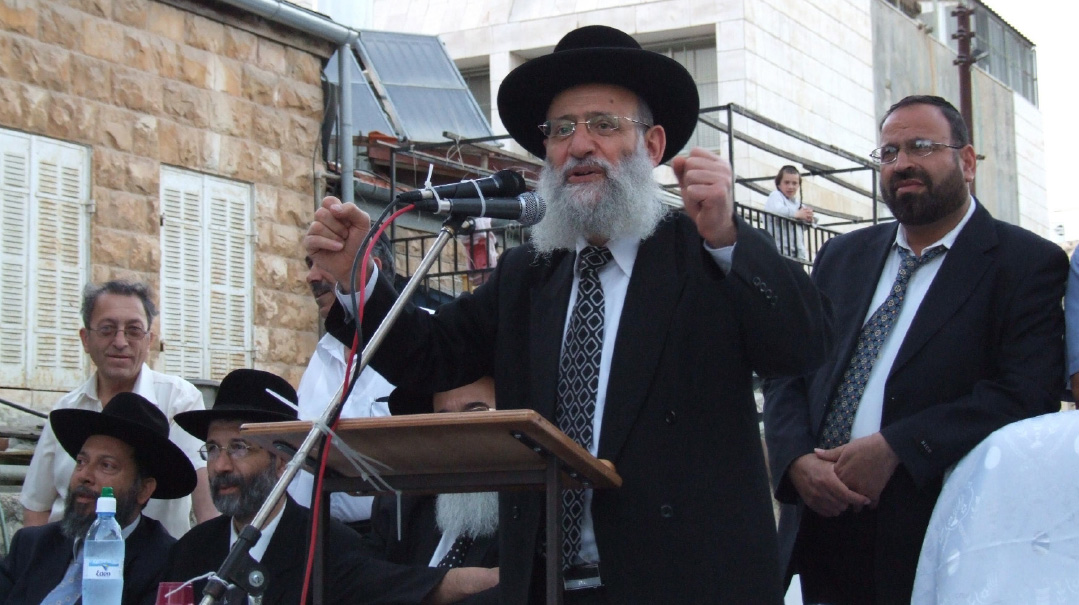
When Rav Elbaz was still a young avreich, Rav Ovadiah noticed his golden tongue and the power of his connectivity. “You have to be able to understand what your audience wants to hear”
Afew tables down from the veteran Rav Menashe is Karni, a 17-year-old kibbutznik from the Golan, representing a new generation.
“I’ve been here a few weeks,” says the soft-spoken teen in a black polo shirt and black kippah. “My family isn’t religious at all, but when I was younger, I started to think about my roots. During Covid when we had no school, I began to go to a local beit knesset and joined a shiur. And that’s how after finishing my high-school studies I ended up here.”
Toward the back of the beis medrash is a student going through a text with the help of a Farsi-Hebrew dictionary. Fresh off the plane from Iran, he’s come to Ohr Hachaim, which has been something of an equivalent to Baltimore’s Ner Israel when it comes to taking in Iranian talmidim.
“Why did I not go to America?” he says in halting Hebrew. “Why go from one galut to another?”
Further along is Dvir, another young graduate of an IDF special forces unit. “This is what I love to do,” he says, gesturing to the Gemara.
“Some of our outstanding students come from these units, or have been singers and athletes,” says Yariv Avnaim. “They take that drive to succeed and use it to become bnei Torah.”
This one beis medrash is half a century’s worth of outreach efforts. How different is it to reach Karni of the smartphone generation as compared to Rav Menashe?
“People talk of the windows of kiruv closing, but we see them opening wide,” says Rav Elbaz. “Still, the reality is that those outside the Torah world are very, very distant now — far more so than when we began. Back then you could talk about the value of Torah and Shabbat, and they would catch fire. Today, you need to dig much more to find that inner Jewish spark. But if you excite people’s regesh, their emotional involvement, then they can be ignited.”
The tools needed to dig deep are the same as ever, though: Torah learning. The process may start with the more emotional experiences, such as an elevated Shabbos, but it all comes back to the blatt Gemara.
“Once people engage, they don’t look back. It always amazes me to see that a year after opening a Gemara, talmidim are able to ‘swim’ in their learning. There’s no explanation for it other than Hashem’s help.”
To resistant parents — of which there are many — Rav Elbaz has one response, delivered with his trademark warmth: “Your son is a diamond — now that he’s learning Torah, see how polished he is.”
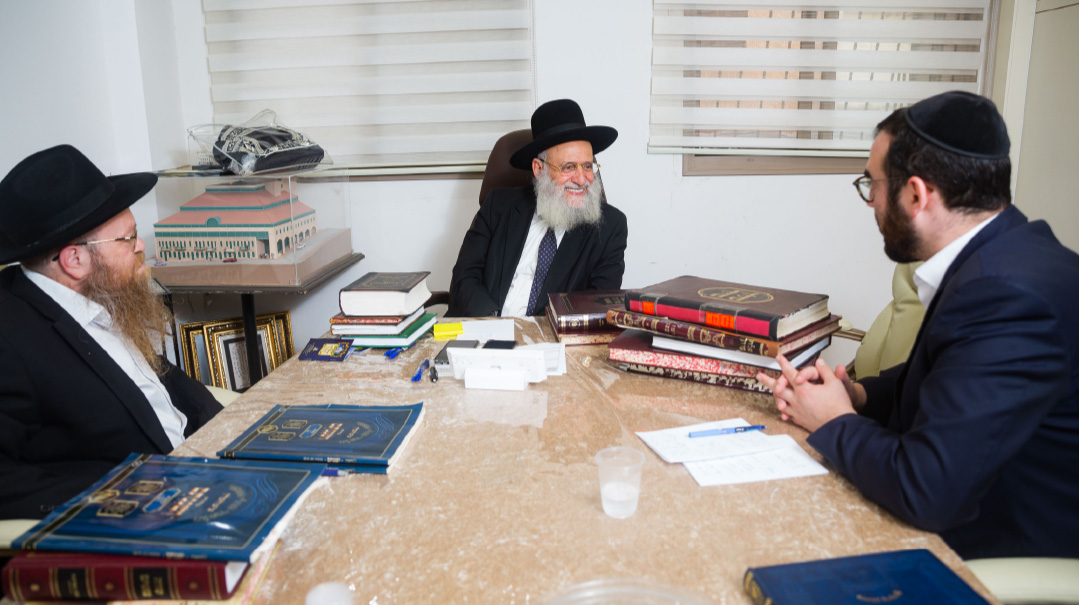
Mishpacha’s reporters gets their own dose of chizuk. “We’re not a wicked generation, rather one of Jews who simply have no idea what is right or wrong”
Light and Action
The fact that such imagery comes readily to Rav Reuven Elbaz should come as no surprise. From the time that he decided to follow the light emitting from the Gemara, he’s spent more than half a century sharing with the world the radiant beauty within the walls of the beis medrash.
It was in 1967 that Rav Elbaz had an encounter that gave his future empire its name and matched its guiding philosophy.
Shortly after the Six Day War, when the Jewish Quarter of the Old City became accessible again, he visited the historic Ohr Hachaim shul, where the great Rav Chaim Ben Attar had davened in the 18th century.
It lay in a shocking state of ruin. The Arabs had used it as a barn after 1948, and the holy site lay defiled.
As a devotee of the holy Ohr Hachaim, Rav Elbaz was stunned by what he’d seen. He was so overcome that he ended up bedridden and depressed.
It was then that he decided to build a yeshivah named after the Ohr Hachaim, one that would follow the Ohr Hachaim’s mission of spreading the light of Torah to Jews wherever they are. The Ohr Hachaim wrote of the need to actively spread Torah as he himself did while he was detained for a time in Livorno, Italy on his way to Eretz Yisrael in the mid-1700s.
Rav Elbaz is convinced that, whatever the challenges of a disconnected generation, the solution hasn’t changed.
“We’re not a wicked generation, rather one of she’eino yodea lishol — of Jews who simply have no idea what is right or wrong,” says this icon of the teshuvah movement in a voice filled with a golden mixture of pity and love. “Each one of us has to go out and find ways to bring Jews close, and tell them that the Torah is not some type of political party, but is the secret of the Jewish people.”
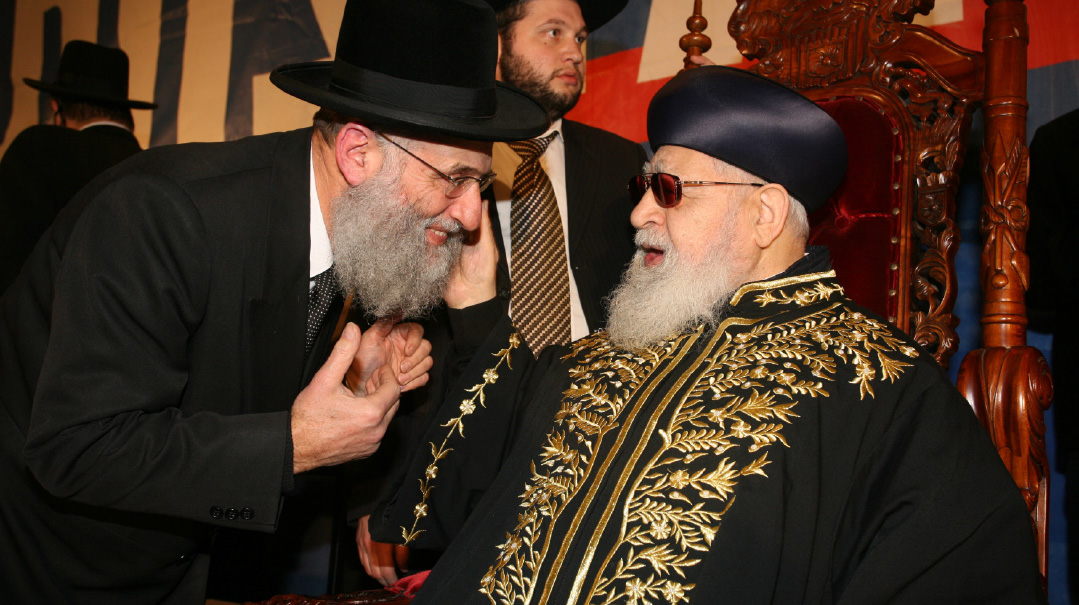
When Rav Ovadiah left to become Tel Aviv’s chief rabbi, he handed over his by-then famous shiurim to Rav Elbaz, a young avreich he knew was destined for greatness
No Contradiction
Perhaps Rav Elbaz’s secret weapon — authentic Torah learning — is the result of his own infusion from the highest ranks of both the Sephardi and Ashkenazi yeshivah worlds. After his teenage years in Tiferes Yisrael, the Steipler advised him to spend a year learning in Yeshivas Magdiel, under Rav Nochum Lesman, a talmid of Rav Boruch Ber and Mir.
“Afterward, I moved to Yeshivas Novardok under Rav Benzion Bruk, with whom I became very close,” says Rav Elbaz. Rav Benzion had taken part in building the Alter of Novardok’s yeshivah empire in Russia — at one time there were 40 branches which revived Torah in that country.
Access to the vanguard of Israel’s post-war yeshivah revival played a crucial part in shaping Rav Elbaz’s outlook, both as a builder and teacher. “That’s the reason that in Ohr Hachaim, we follow the approach of the Ashkenazi yeshivah world,” he says.
And it was never a contradiction in style to his mentor, Rav Ovadiah.
“Despite the different emphasis in the yeshivot from Rav Ovadiah’s own learning style, which was focused on psak, he never commented on it,” Rav Elbaz says. “That’s because he knew everything — even the works of the Ashkenazi roshei yeshivah.
“Once, he was giving a shiur in Choshen Mishpat, and an avreich from Chevron asked a question. Rav Ovadiah responded simply, ‘Rav Shimon Shkop has an entire chapter in Sha’arei Yosher about that.’ The man was amazed by Rav Ovadiah’s command of different sources, but the reference was nothing unusual. He would quote from Rav Elchonon Wasserman like he would quote from any other source.”
(Originally featured in Mishpacha, Issue 929)
Oops! We could not locate your form.







